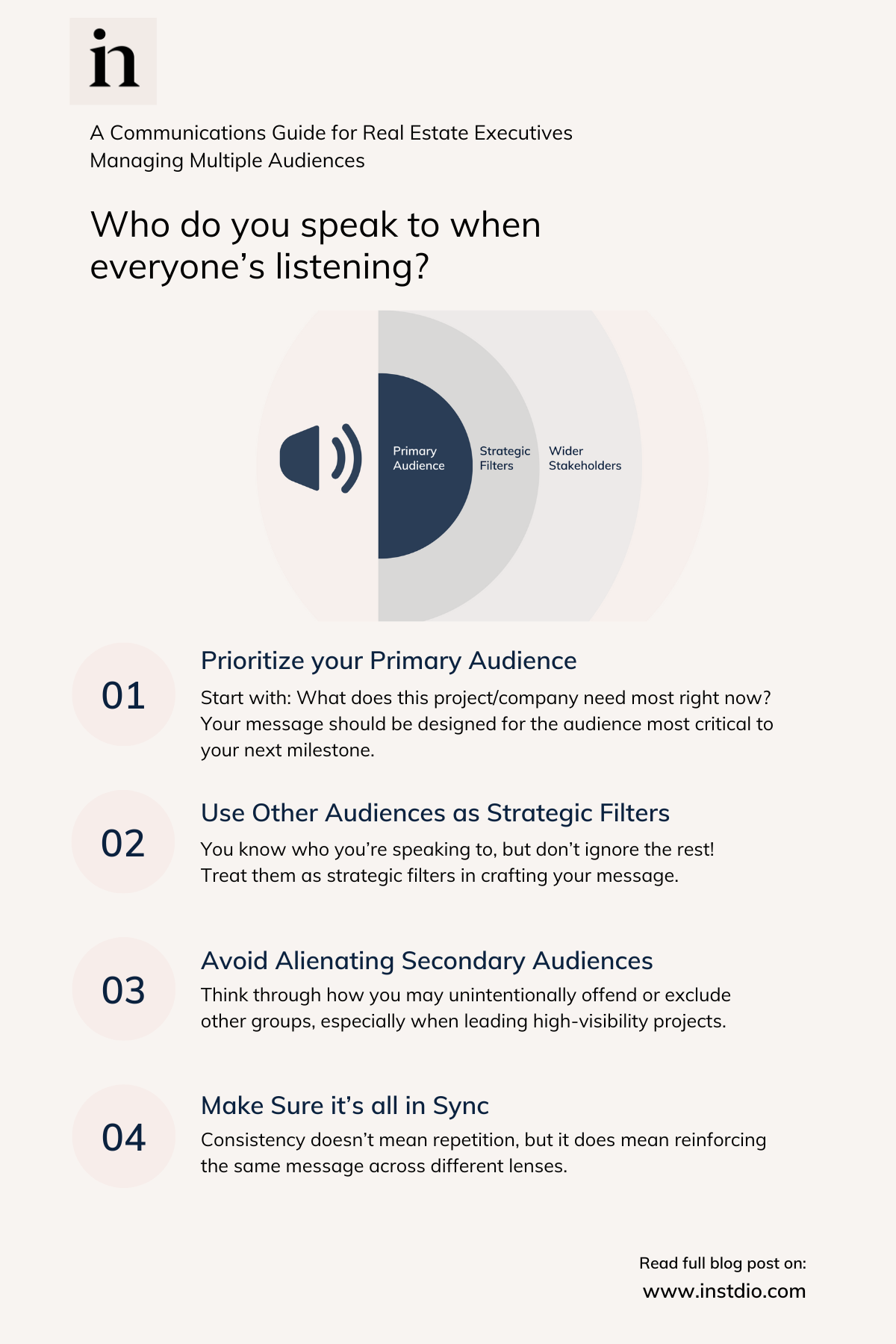Who Do You Speak to When Everyone’s Listening?
Date: June 30, 2025
A Communications Guide for Real Estate Executives Managing Multiple Audiences
In the world of effective real estate management, the story you tell matters. The challenge is that you’re rarely speaking to just one audience.
You’re speaking to investors, community members, government officials, future tenants, current employees and your board, often all at once.
We’ve seen this complexity play out across every kind of initiative from website development to writing a press release. The pressure to be everything to everyone can dilute a message before it lands.
So how do you focus?
1. Prioritize Your Primary Audience
Start with: What does this project/company need most right now?
Are you raising capital and need to signal market potential and leadership?
Are you aligning internal stakeholders and seeking board approval?
Are you in the early stages of securing entitlements and need community support?
Your message should be designed for that top-tier audience — the group most critical to your next milestone.
2. Use Other Audiences as Strategic Filters
Once you know who you’re speaking to, don’t ignore the rest. Though they aren’t the primary recipients of your message, you still want to consider them as strategic filters in crafting it. For example:
When writing for investors, consider how your message may be perceived by owners or community members.
When creating community materials, keep future employees in mind — you’re building a brand they may one day represent.
When preparing council-facing materials, consider how your partners or tenants may interpret them.
This balancing act ensures you stay focused.
3. Avoid Alienating Secondary Audiences
You don’t need to over-tailor to every group, but you do need to avoid unintentionally offending or excluding them. Your words carry weight, especially when you’re leading a high-visibility project.
A few tips:
Avoid jargon or insider-only language when communicating publicly.
Acknowledge broader stakeholder concerns, even if they aren’t your current focus.
Signal alignment with consistent values true to your brand.
4. Make Sure it’s all in Sync
All of your messaging — internal memos, external releases, social content, investor decks — should ladder up to the same core narrative. Consistency doesn’t mean repetition. It means reinforcing the same message across different lenses.
When your communications are aligned, your reputation strengthens. When they’re fractured, trust erodes.
Final Thought
The most effective communicators aren’t trying to speak to everyone equally. They’re clear on who needs to hear them now and they make sure that message lands, with everyone else watching.
Need help navigating the complexity of stakeholder communications? That’s where we come in. At Instdio Communications, we help developers shape messages that build alignment, buy-in, and momentum.


